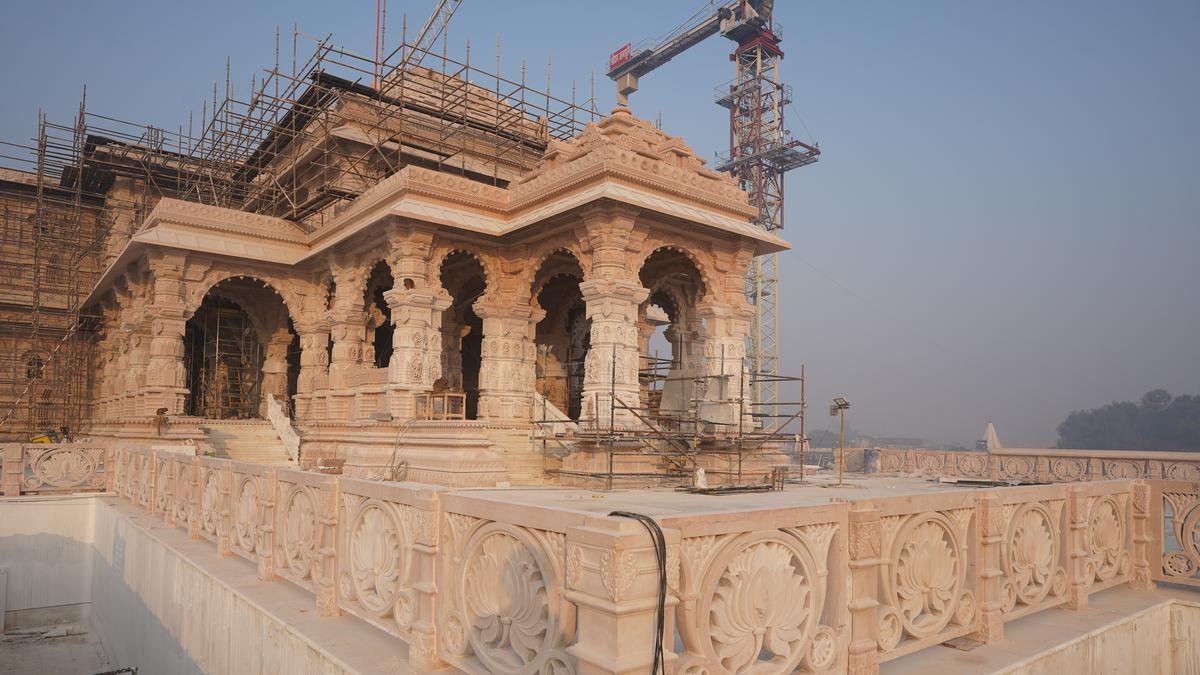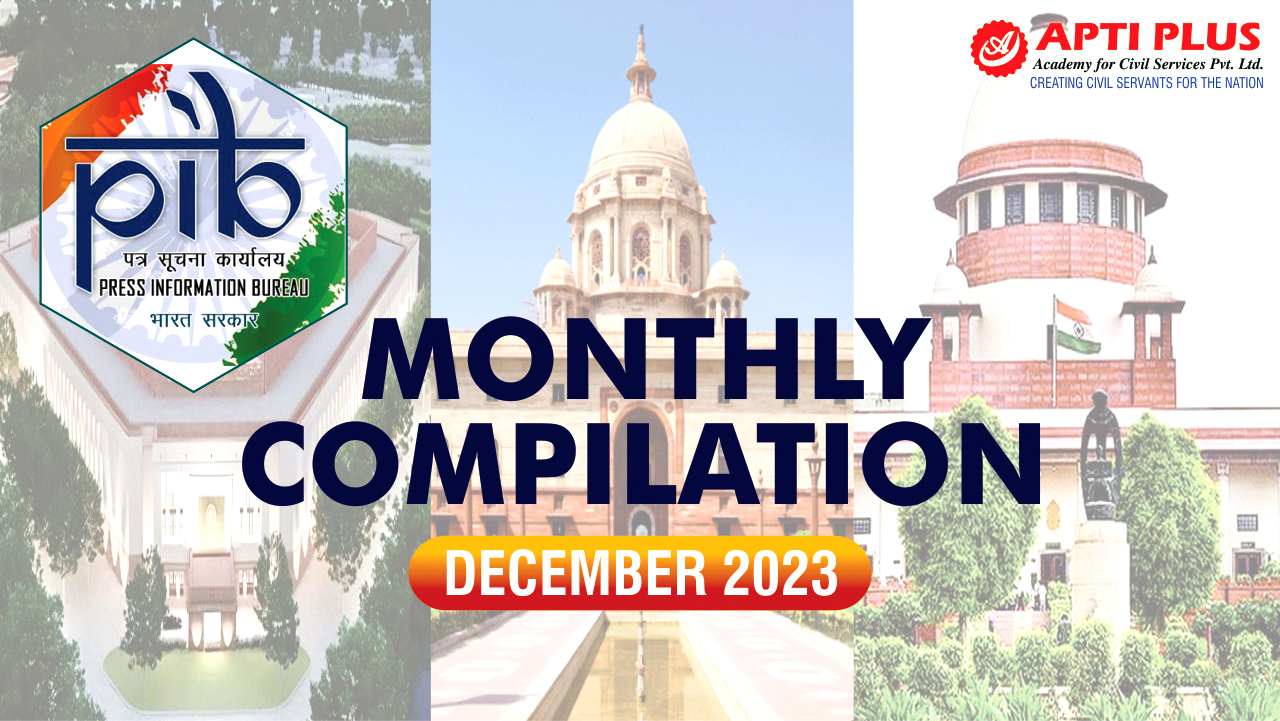
Disclaimer: Copyright infringement not intended.
Context
- In recent times, India has witnessed a significant surge in the restoration, expansion, and construction of temples across various states.
- These projects, often backed by substantial financial investments, reflect not only a revival of sacred spaces but also a nuanced interplay between religion, politics, and cultural identity.
- From the iconic Ram Temple in Ayodhya to the majestic Viraat Ramayan Temple in Bihar, each project serves as a testament to the complex dynamics shaping India's contemporary socio-political landscape.
Details
Ayodhya's Ram Temple
- Inauguration: The Ram Temple, set to be inaugurated on January 22, is a symbol of the transformation of India into a Hindu nation.
- Significance: It marks a nationalistic milestone, embodying the nexus between religion and politics.
- The Ram Janmabhoomi Temple in Ayodhya is an iconic pilgrimage site for Hindus.
- The temple's construction began in 2020 after a long-standing legal and socio-political dispute.
- The architecture of the temple is inspired by ancient Indian temple traditions, particularly the Nagara style.
- The sanctum sanctorum houses the idol of Lord Rama, along with idols of his consort Sita, and his loyal devotee Hanuman.
Assam - Batadrava Satra
- Project: The ₹188-crore project aims to develop Batadrava, the birthplace of neo-Vaishnav saint Srimanta Sankaradeva.
- Objective: Aligned with the BJP's agenda, the project seeks to preserve history, cultural heritage, and address encroachments.
- Batadrava Satra, founded by Srimanta Sankardev in the 16th century, is a center for Assamese Vaishnavism.
- It played a crucial role in the Bhakti movement in Assam, emphasizing devotion to Lord Krishna.
- The Satra complex includes a prayer hall, a museum, and various cultural centers promoting traditional arts and dance.
Odisha - Jagannath Temple
- Project: Odisha earmarked ₹4,224.22 crore for the transformation of Puri’s Jagannath Temple and its periphery.
- Amenities: The project includes washrooms, a circumambulatory path, guest houses, and medical facilities.
- The Jagannath Temple, built in the 12th century, is an important pilgrimage site for Hindus.
- The main deities in the temple are Lord Jagannath, his brother Balabhadra, and their sister Subhadra.
- The Rath Yatra, or Chariot Festival, attracts millions of devotees annually, symbolizing the journey of the deities to their aunt's residence.
Bihar - Viraat Ramayan Temple
- Temple Description: Underway in Bihar’s East Champaran district, the ₹500 crore Viraat Ramayan Temple is inspired by Angkor Wat.
- Features: The temple boasts 12 domes, 22 sanctum sanctorums, and a 33-foot-tall black granite shivling.
- Viraat Ramayan Temple is associated with the Mahabharata and is believed to be the spot where Sage Vashishta narrated the Ramayana to Lord Rama.
- The temple complex showcases scenes from the Ramayana through intricate sculptures and carvings.
- Devotees visit to gain spiritual insights and blessings associated with the epic.

Himachal Pradesh - Bilaspur Temples
- Proposal: A ₹1,500 crore proposal for the restoration of submerged temples in Bilaspur to promote religious and heritage tourism.
- The Laxmi Narayan Temple and Markandeya Rishi Temple are known for their unique architecture and religious significance.
Uttar Pradesh - Madhava Temples
- Restoration Project: Uttar Pradesh is restoring 12 Madhava temples and the Bade Hanuman temple in Prayagraj at a cost of ₹2,500 crore.
- Spiritual Circuit: A 125-km-long 'spiritual circuit' is under development, emphasizing beautification and rejuvenation.
- Vrindavan, where the Madhava Temples are located, is associated with the childhood of Lord Krishna.
- The temples, such as the Banke Bihari Temple and Radha Raman Temple, are renowned for their devotional practices and vibrant festivals.
- The town is a hub for Krishna devotees and showcases the rich cultural and spiritual heritage of the Vaishnavite tradition.
Karnataka - Temple Restoration
- Approach: Karnataka's DAMH employs a public-private-partnership model, restoring historically significant temples across 25 districts.
- Projects: Over the past decade, scores of temples have been restored for ₹35.37 crore.
Haryana - Kurukshetra
- Project: Kurukshetra, the mythical battlefield, is undergoing development projects worth ₹400 crore, aiming to turn it into a spiritual hub.
- Kurukshetra, known as the battlefield of the Mahabharata, has several temples and sacred ponds.
- The Brahma Sarovar and Sannihit Sarovar are revered, and taking a dip during solar eclipses is considered auspicious.
- The Sannihit Sarovar is believed to be the meeting point of seven sacred Sarasvatis.
Telangana - Narasimha Swamy Temple
- Makeover: Telangana invests ₹1,200 crore in the makeover of Narasimha Swamy temple, turning it into a grand spectacle visible from passing trains.
- The Narasimha Swamy Temple in Yadagirigutta is dedicated to Lord Narasimha, an incarnation of Lord Vishnu.
- The temple architecture reflects a blend of Dravidian and Chalukyan styles.
- Devotees believe that a visit to the temple brings blessings for courage and protection.
Rajasthan - Govind Dev and Beneshwar Dham Temples
- Development Packages: ₹200 crore development packages announced for Govind Dev temple in Jaipur and Beneshwar Dham temple in Dungarpur district.
- The Govind Dev Ji Temple in Jaipur is dedicated to Lord Krishna.
- The temple is a significant pilgrimage site, and the idol of Govind Dev Ji was brought from Vrindavan.
- The temple complex is adorned with stunning artwork and architecture.
Kerala - Thirunelli Temple
- Renovation: The Thirunelli temple, believed to be 5,000 years old, is undergoing renovation at ₹10 crore.
- Thirunelli Temple in Wayanad is a historic temple dedicated to Lord Vishnu.
- Surrounded by lush greenery and mountains, it is often referred to as the "Kashi of the South."
- The temple is famous for the Papanasini River, believed to wash away sins.
Chhattisgarh - Mata Kaushalya Mandir
- Restoration: A ₹32 crore restoration project is underway for Mata Kaushalya Mandir in Chhattisgarh, inspired by the Ram Mandir in Ayodhya.
- Mata Kaushalya Mandir in Raipur is dedicated to Mata Kaushalya, the mother of Lord Rama.
- Devotees visit the temple seeking blessings for familial harmony and well-being.
West Bengal - Kalighat Temple
- Restoration: Reliance Foundation announces the restoration project for the famous Kalighat temple in Kolkata.
- Jagannath Temple: West Bengal government constructing a Jagannath Temple in Digha at a cost exceeding ₹100 crore.
Kashmir - Amarnath Shrine
- Roadway Project: A ₹5,300 crore roadway project is approved, aiming to make the annual pilgrimage to the Amarnath shrine more accessible.

Analysis
- Political Context: The text highlights the intertwined nature of politics, religion, and nationalism in the development and revival of temples.
- Tourism Emphasis: Many projects aim not only at religious significance but also at developing tourist attractions.
- Nationalistic Shift: The projects reflect a nationalistic shift, with sacred spaces and temples being used to strengthen the idea of a Hindu political order and reinforce cultural and historical identity.
- Infrastructure Development: Beyond religious significance, there is a focus on infrastructure development, tourism promotion, and modernization of facilities around temples.
- Influence of Hindutva: The rise of Hindutva is evident in the repurposing of cultural resources, temple development, and the intertwining of religious and political agendas.
- Economic Investments: Significant financial investments, often in the form of multi-crore projects, are being allocated for temple restorations and developments across various states.
- Inclusive or Divisive: While some projects aim at preserving cultural heritage and promoting tourism, others raise concerns about potential exclusion of certain communities from sacred areas.
Conclusion
These temple projects, while catering to religious sentiments, also serve as potent symbols in the larger narrative of India's cultural and political evolution. The intricate connections between religious identity, nationalism, and infrastructure development highlight the multifaceted nature of these initiatives in contemporary India.
|
PRACTICE QUESTION
Q. Discuss the revival and development of temples in various states of India, highlighting the cultural, political, and socio-economic implications. Evaluate the role of these temple projects in shaping the national narrative and their impact on social harmony. (250 Words)
|




